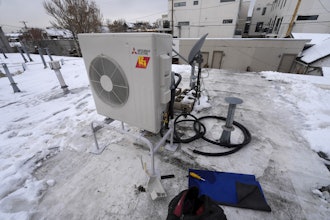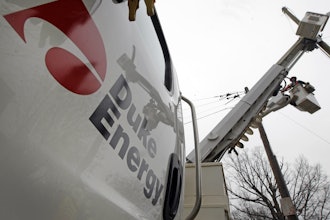
WASHINGTON (AP) — The Biden administration on Tuesday lowered annual production requirements for ethanol and other biofuels to account for reduced demand as a result of the coronavirus pandemic.
At the same time, the administration moved to reject requests by small oil refineries to be exempted from ethanol requirements, saying they had failed to show exemptions were justified under the Clean Air Act.
Taken together, the actions reflect the administration’s “commitment to reset and strengthen” the federal Renewable Fuel Standard, or RFS, “following years of mismanagement” by the Trump administration and disruptions to the gasoline market stemming from the COVID-19 pandemic, officials said.
The actions announced Tuesday will enable officials “to get the RFS program back in growth mode by setting ambitious levels for 2022 and by reinforcing the foundation of the program so that it’s rooted in science and the law,” said Michael Regan, administrator of the Environmental Protection Agency, which sets ethanol requirements under the RFS.
The lower production targets are a win for the oil industry, which argues that biofuel blending is costly and raises gasoline prices. Ethanol producers, including the nation’s corn farmers, say the corn-based renewable fuel is better for the environment and helps meet federal climate change goals.
Federal law requires refiners to blend billions of gallons of biofuels in the nation’s gasoline supply or buy credits from refineries that do the blending. Refineries can seek waivers if they can show that meeting the ethanol quotas would create a financial hardship for their companies.
The ethanol industry struggled last year as gasoline usage dipped because workers stayed home instead of commuting and vacation travel halted. As fuel sales began to return, demand for ethanol increased, pushing prices higher.
In addition, Midwest farmers had a good growing year for corn and the abundant supply moderated corn prices, lowering the input costs for ethanol producers. The combination of higher demand and lower input costs pushed ethanol profits to near record levels.
The petroleum industry has been pushing EPA to set their obligation for corn-based ethanol for 2020, 2021 and 2022 at the levels of current use. Currently most gasoline sold in the U.S. is 10% ethanol, and petroleum refiners want the government requirement to be met with that level of sales.
In a demonstration of the RFS program’s quirks, EPA set production targets Tuesday for calendar years 2020, 2021 and 2022. The agency proposed 12.5 billion gallons of corn-based ethanol for 2020, 13.3 billion gallons for 2021 and 15 billion gallons for 2022. The 2020 figure is down from a projected 15 billion gallons set by the Trump administration and close to the actual amount of corn ethanol produced last year. Volumes for 2021 also are close to expected production volumes.
The Renewable Fuels Association, an ethanol lobbying group, called the retroactive reduction of the 2020 targets “unprecedented” and unfair, but said it welcomes the 2022 projection of 15 billion gallons of corn ethanol.
Sen. Chuck Grassley, R-Iowa, a staunch ethanol advocate, slammed the move to adjust the 2020 targets in the last month of 2021. He called it “a boon for Big Oil'' and asked: “What’s to stop the administration from slashing 2022 obligations down the line? It’s a disgrace and an outrage to Iowa producers and anyone who cares about our environment.''
EPA's action also contradicts Biden's campaign promise to “promote and advance" ethanol and other biofuels, Grassley said.
“I don’t want to hear another word about President Biden’s so-called climate priorities until he puts his money where his mouth is and delivers cleaner, cheaper biofuels for Americans, just as he promised Iowans on the campaign trail,” he said.
Even so, ethanol groups applauded EPA’s move to deny all pending small refinery exemption petitions, following a court ruling earlier this year.
The EPA package “represents a modest step in the right direction for the nation’s ethanol producers and farmers,’’ said RFA president and CEO Geoff Cooper.
The American Fuel & Petrochemical Manufacturers, which represents refineries, said the 2022 proposal would “needlessly increase already record-breaking RFS compliance costs” and raise gasoline and diesel prices.
“The RFS is broken and must be fixed. EPA’s proposal will make matters worse for refiners and consumers alike,’’ said Chet Thompson, the group’s president and CEO.
While the law sets benchmarks for the ethanol industry to meet, it also allows EPA to waive the targets if it determines the program is causing severe economic or environmental harm based on inadequate domestic supply.
The Energy Information Administration said gasoline used for cars and trucks fell to 8 million barrels per day last year, a 14% drop from 2019 and the lowest level of consumption since 1997. Since ethanol is blended into the nation’s gasoline supply, a drop in gas use resulted in lower demand for ethanol.
The 2020 target is far short of the 30 billion gallons mandated for 2020 by Congress when the ethanol law was vastly expanded nearly 15 years ago. EPA hasn’t met the ethanol volume requirement in the 2007 law since 2013.





















